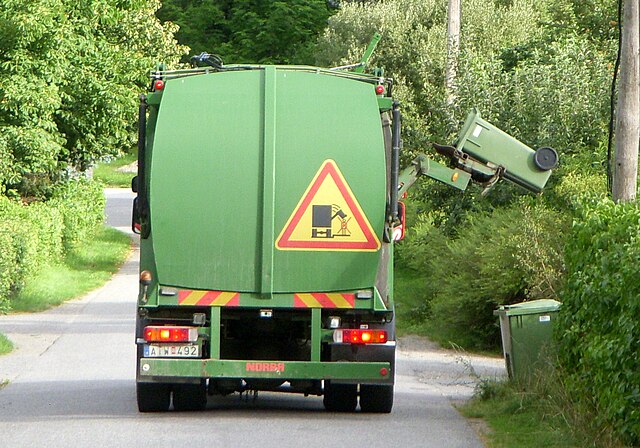Hazardous waste is waste that must be handled properly to avoid damaging human health or the environment. Waste can be hazardous because it is toxic, reacts violently with other chemicals, or is corrosive, among other traits. As of 2022, humanity produces 300-500 million metric tons of hazardous waste annually. Some common examples are electronics, batteries, and paints. An important aspect of managing hazardous waste is safe disposal. Hazardous waste can be stored in hazardous waste landfills, burned, or recycled into something new. Managing hazardous waste is important to achieve worldwide sustainability. Hazardous waste is regulated on national scale by national governments as well as on an international scale by the United Nations (UN) and international treaties.
North Seattle household hazardous waste collection facility.
Household Hazardous Waste separated for proper disposal
Large debris pile near to EPA's 'Household Hazardous Waste' collection PAD
The Valley of the Drums, a toxic waste dump in northern Bullitt County, Kentucky
Waste are unwanted or unusable materials. Waste is any substance discarded after primary use, or is worthless, defective and of no use. A by-product, by contrast is a joint product of relatively minor economic value. A waste product may become a by-product, joint product or resource through an invention that raises a waste product's value above zero.
An art installation created with plastic bottles and other non-biodegradable waste
Onkalo, a deep geological repository for the final disposal of the radioactive waste, located near the Olkiluoto Nuclear Power Plant in Eurajoki, Finland
Waste generation, measured in kilograms per person per day
A specialized trash collection truck providing regular municipal trash collection in a neighborhood in Stockholm, Sweden








